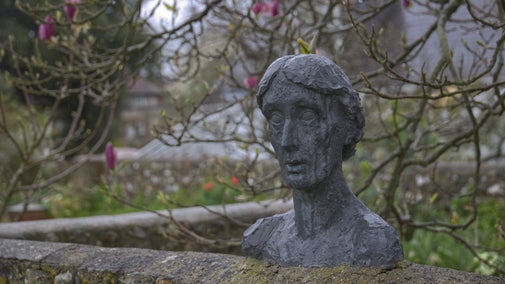
Gardens and landscapes
Find out more about the historical landscapes that the talented garden teams work hard to conserve at the places you love to visit.

From the later 19th century, open space campaigners in England and Wales sought to preserve open space for recreation. Find out how the history of the open space movement saved the countryside for recreation and inspired the National Trust.
Before the industrial revolution most English and Welsh people lived in the country surrounded by green space. By 1851, most of them lived in towns and had little access to open space. Industrial growth and urban sprawl threatened the countryside.
Open space campaigners focused on preserving open land and making it accessible – unlike in some other countries where preserving inaccessible wilderness was the priority.
Early campaigns focused on common land near London. Later the focus shifted to remoter places such as the Lake District.
Some campaigners were inspired by the beauty of nature, while others hoped that recreation in nature would improve people’s health or even morals. Radical campaigners wanted to stop the rich stealing open land from the poor, and conservative campaigners wanted to preserve traditional ways of life.

Campaigners fought in the courts and parliament. They raised money to buy land and persuaded landowners to allow the public onto land such as urban churchyards or royal parks. They removed illegal fences round commons and organised mass trespasses.
Finally, parliament passed laws protecting common land from the late 19th century onwards. Green belts around cities and National Parks were established from the 1940s, and rights of access to private open space in the year 2000.
The National Trust’s distinct contribution to the open space movement is to manage its land in the public interest. It also opposes damaging developments and even ran a mass campaign in 2011 to oppose the weakening of the planning controls which protect open spaces.
Many open spaces in town and countryside now enjoy protection, but controversy continues. Should open spaces be used for vitally needed housing or transport links? Do visitors threaten the peace and beauty of open spaces? Do the animals and plants which live in open spaces have rights which deserve protection? Campaigning on these and other open space questions looks set to continue for many years to come.
This article contains contributions from Elizabeth Baigent from the University of Oxford who researches and writes on the history of conservation and co-edited the book ‘Nobler imaginings and mightier struggles’: Octavia Hill, Social Activism and the Remaking of British Society (2016). Elizabeth is part of the trusted source project.

Find out more about the historical landscapes that the talented garden teams work hard to conserve at the places you love to visit.

A hub for multi-disciplinary research projects and research engagement at the University of Oxford

Find out more about our Trusted Source articles, which were created in partnership with the University of Oxford, and explore topics related to the special places in our care.

The history of the English landscape garden is infused with political meaning. Learn the history and political stories behind this garden style characterised by structured informality.

Find out more about the picturesque aesthetic style and how it became a fashionable choice for wealthy estates in the 18th century. Discover more about the people who influenced the movement.

Learn about pioneering women gardeners from Edith, Lady Londonderry’s rare plants and symbolism, to Kitty Lloyd Jones, one of the first women to train as a professional horticulturalist.

Learn more about the LGBTQ+ people with connections to the places we care for and why highlighting these stories is important.

Discover the fascinating and contentious history of commons, natural green spaces that were once used by the community before many were enclosed by private landowners.

Ancient trees are links to our past, they're species-rich habitats that support countless other organisms. Discover what makes a tree ancient and how to recognise them.

Discover some of the finest historic gardens in our care and how they were shaped by Victorian plant collectors, as they gathered plant species from across the globe.